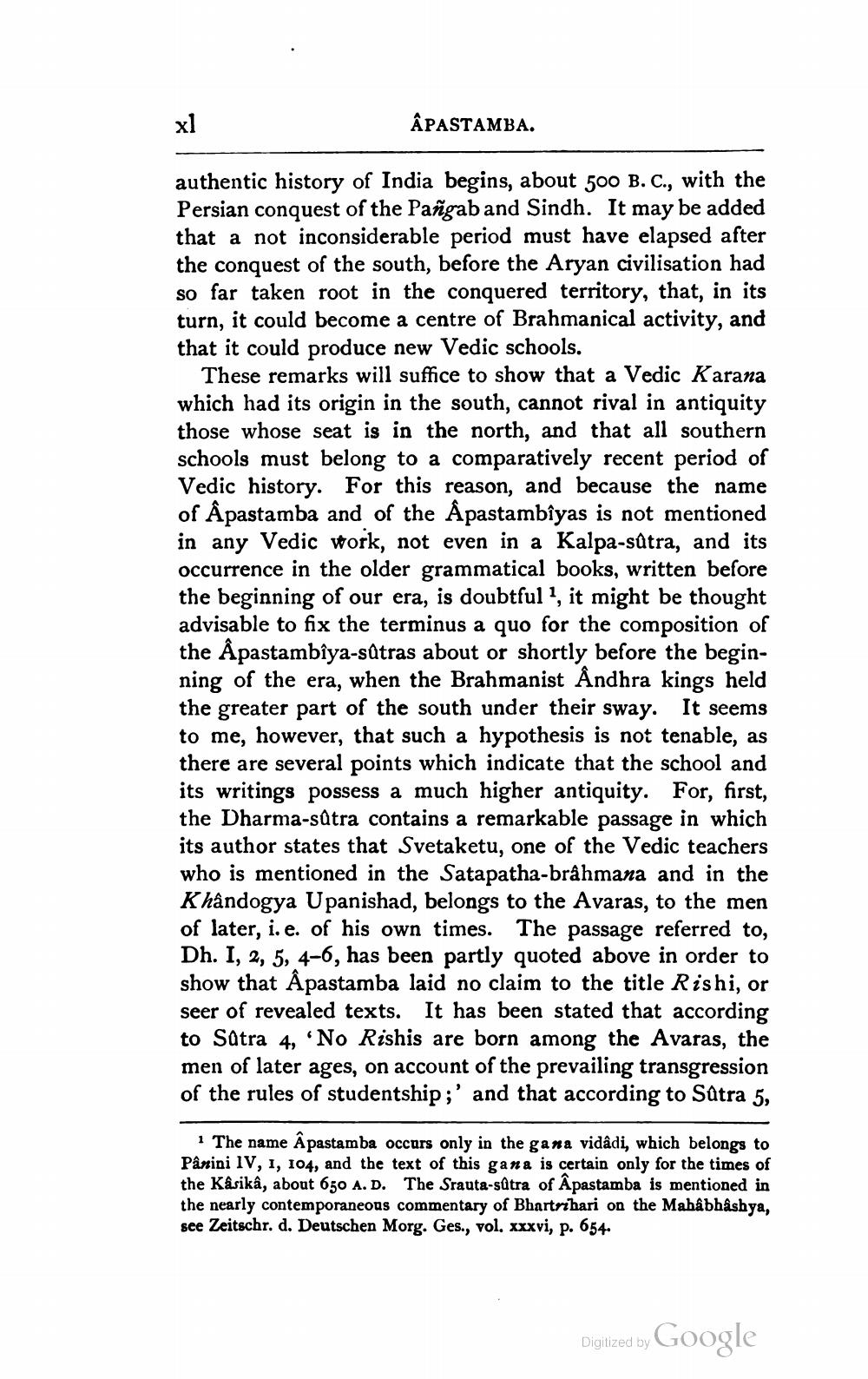________________
ÂPASTAMBA.
authentic history of India begins, about 500 B.C., with the Persian conquest of the Pañgab and Sindh. It may be added that a not inconsiderable period must have elapsed after the conquest of the south, before the Aryan civilisation had so far taken root in the conquered territory, that, in its turn, it could become a centre of Brahmanical activity, and that it could produce new Vedic schools.
These remarks will suffice to show that a Vedic Karana which had its origin in the south, cannot rival in antiquity those whose seat is in the north, and that all southern schools must belong to a comparatively recent period of Vedic history. For this reason, and because the name of Åpastamba and of the Åpastambiyas is not mentioned in any Vedic work, not even in a Kalpa-sútra, and its occurrence in the older grammatical books, written before the beginning of our era, is doubtful 1, it might be thought advisable to fix the terminus a quo for the composition of the Âpastambîya-sútras about or shortly before the beginning of the era, when the Brahmanist Andhra kings held the greater part of the south under their sway. It seems to me, however, that such a hypothesis is not tenable, as there are several points which indicate that the school and its writings possess a much higher antiquity. For, first, the Dharma-sâtra contains a remarkable passage in which its author states that Svetaketu, one of the Vedic teachers who is mentioned in the Satapatha-brâhmana and in the Khândogya Upanishad, belongs to the Avaras, to the men of later, i.e. of his own times. The passage referred to, Dh. I, 2, 5, 4-6, has been partly quoted above in order to show that Âpastamba laid no claim to the title Rishi, or seer of revealed texts. It has been stated that according to Satra 4, 'No Rishis are born among the Avaras, the men of later ages, on account of the prevailing transgression of the rules of studentship;' and that according to Sutra 5,
1 The name Âpastamba occurs only in the gana vidâdi, which belongs to Pânini IV, 1, 104, and the text of this gana is certain only for the times of the Kasikâ, about 650 A.D. The Srauta-sůtra of Apastamba is mentioned in the nearly contemporaneous commentary of Bhartrihari on the Mahâbhâshya, see Zeitschr. d. Deutschen Morg. Ges., vol. xxxvi, p. 654.
Digitized by Google




